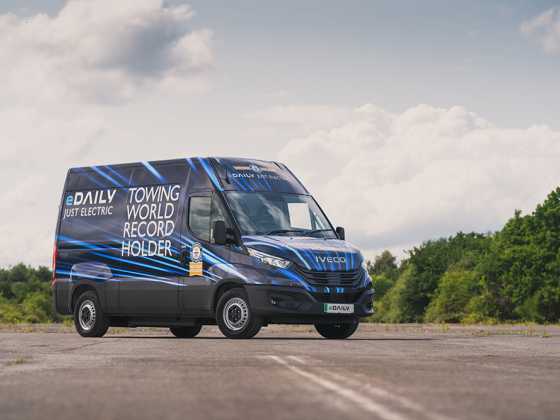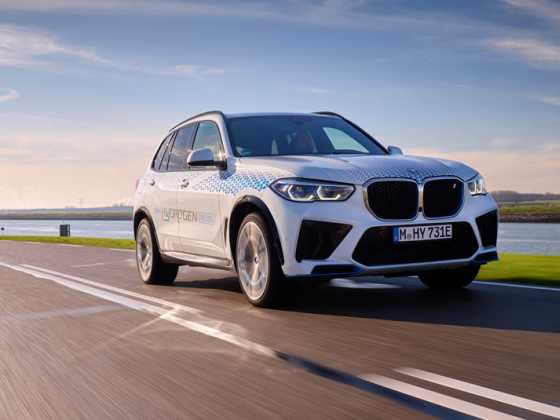Renault Pro+ Kangoo E-Tech Electric

Building on its rich electric light commercial vehicle heritage, Renault Pro+ has introduced an all-new zero-emission version of the Kangoo. Richard Gooding discovers a more accommodating and more powerful vehicle with much fleet appeal
What is it?
The Renault Kangoo first arrived in 1997, with the first electrified models sold in selected European markets from 2002. However, the all-electric Kangoo Z.E available from 2011 as part of the second-generation model family is the version most will be familiar with. The small zero-emission LCV could travel up to 110 miles with its 44kW motor and 22kWh battery and was named GreenFleet’s Electric Vehicle of the Year in 2012 and 2013.
In October 2022, the third-generation Kangoo was launched, the new E-Tech Electric versions being present from the start. Now fitted with a 90kW motor and 44kWh lithium-ion battery pack, the new Kangoo has a much more useful range of up to 186 miles. With a choice of two wheelbases, load volume of Renault’s LCV electric newcomer varies from 3.3 to 4.2m3.
How practical is it?
As with the combustion-engined versions of the Kangoo, the E-Tech Electric version is available with medium (MWB) or long (LWB) wheelbases. This means there should be practicality aplenty and a model for all LCV fleets looking to decarbonise.
Kangoo MWB models have a wheelbase of 2,716mm, with an overall length of 4,486mm. Height is 1,864mm, while width – including door mirrors – is 2,159mm. Inside, maximum cargo height is 1,215mm with a maximum loading width of 1,806mm. MWB vans come with a 613mm long, single sliding door. Sitting just below the roof, above the loadspace, Renault’s optional ‘Easy Inside’ rack load-through package allows you to carry items up to 2,090mm long and 456mm wide and is perfect for carrying ladders. Overall, MWB Kangoos are able to carry up to 3.3m3 of cargo, with a maximum 608kg payload.
Maximum load volume on LWB models increases to 4.2m3, with a 764kg maximum payload. Overall length increases to 4,910mm, with a 3,100mm wheelbase. LWB models are fitted with twin sliding doors, 813mm in length, while the load width increases to 2,230mm. Choose the ‘Easy Inside’ rack to carry items up to 2,433mm long. The height of the 60:40 and 180-degree opening hinged rear doors on both versions is 1,893mm, and a full bulkhead keeps you and your precious cargo separated from one another.
Sadly, one innovation the UK and other right-hand drive markets won’t see, is the removal of the van’s B-pillar, which gives unimpeded access to the cargo area. On left-hand drive vans, this creates a large opening when the sliding door and cab door are opened on the passenger side. However, engineering this to appear on the passenger side for right-hand drive models was deemed too costly.
It is also worth noting that an electric LWB Crew Van model was given a scheduled UK on-sale date of July 2023, but as of yet, there are no details offered on the Renault Pro+ website. This will offer two rows of seats with a 2.3m3 load volume, increasing to 3.3m3 if the second row of seats is folded. Payload is 710kg.
What range does it have?
All Kangoo E-Tech Electric models have a 44kWh lithium-ion battery, delivering an official WLTP range of up to 186 miles. A heat pump is fitted to all, providing a more efficient way to warm and cool the cabin.
How long does it take to charge?
A 20-80 per cent battery top-up takes around 40 minutes when connected to an 80kW rapid charger. Plug the Kangoo into a 22kW AC charger, and you’ll need to allow around 80 minutes. When you’re at a home or workplace 7.4kW wallbox or charging post, the same 20-80 per cent refill takes a little over four hours and when connected to a 2.2kW supply, the electric Renault van needs to be plugged in for 13 hours for the same charge percentage. A mode 3, type 2 AC charging cable is standard with every Kangoo E-Tech Electric.
How does it drive?
In line with other eLCVs, there is little to tell the electric versions of the Kangoo apart from their ICE siblings. A
small ‘E-Tech Electric’ badge at the rear and the subtle, hidden front charging port behind the Renault badge are the only giveaways. That’s a good thing as the new Kangoo is a handsome machine, and the electric version does nothing to detract from that.
Inside, the softer-touch plastics and varying coloured materials of our Advance test van created an impression of quality, and with the air conditioning controls and the centre touchscreen similar to those fitted to the Clio passenger car, there is a more car-like feeling than ever before.
That impression continues on the move. Based on the CMF-CD platform used by both Renault and Nissan for its passenger vehicles, it should come as little surprise that the Kangoo drives more like a car than ever before, too. Ideal for a vehicle which will spend most of its time in urban environments, the steering is light which means it can be placed easily on the road, and the ride is comfortable, too, with body roll also kept in check. The 180lb ft of torque from the electric motor gives the Renault van plenty of pace and instant acceleration, and two driving modes – Normal or Eco – allow you to choose how the van uses its energy. The latter cuts power to 45kW (60bhp) to save that precious battery energy and conserve range, and three levels of regenerative braking also help to eke out the Renault’s reserves.
Chosen by moving the ‘gear selector’ to the right, ‘B1’ mode is a ‘sailing’ or coasting mode, which limits regeneration, and is for driving on motorways or other higher speed roads. ‘B2’ gives a more traditional engine braking feeling, while ‘B3’ is for maximum energy recuperation, and if you anticipate enough, does offer a near-one-pedal braking function.
What does it cost?
The Plug-In Van Grant (PIVG) from the UK government will contribute up to 35 per cent of the purchase price of the Kangoo E-Tech Electric, up to a maximum of £2,500.
To keep things simple, Renault Pro+ offers its new small zero-emission van in just two trims, with a choice of medium (MWB) and long (LWB) wheelbases. All have the same battery and electric motor. The Start MWB is the entry level point, priced at £35,875 including VAT and with PIVG deducted. The LWB version costs £1,800 more. Standard equipment includes automatic headlights and wipers, DAB radio with Bluetooth and USB connectivity, electric front windows, electrically heated and adjustable door mirrors, and a 3.5-inch TFT driver information display. Automatic air conditioning, cruise control with speed limiter, hill start assist and Renault’s ‘Z.E Voice’ are additional and useful standard features.
Move up to Advance (£37,075 MWB, £38,875 LWB) and equipment is significantly and usefully upgraded. Inside, an eight-inch touchscreen infotainment system with Renault’s Easy-Link OS and Android Auto and Apple CarPlay smartphone integration is the most obvious change. Other upgrades over the Start specification include a passenger bench seat, an electric parking brake, rear parking sensors, LED lighting in the cargo area, an alarm, and externally, a body coloured sliding door rail.
Optional equipment includes adaptive cruise control, a suite of electronic driving aids – blind spot warning, active emergency braking, high beam assistance and lane keeping assistance systems – a rear view camera and a wireless smartphone charger.
Why does my fleet need one?
Well-known and regarded in the light commercial and eLCV sectors, electric versions of the Renault Kangoo have proven popular with fleets all across the UK. Named the 2022 International Van of the Year, this new model gives no indication that this will change.
More accommodating, more powerful, and with more car-like features than its predecessors, the 2023 Renault Kangoo E-Tech Electric mixes it with the class best of the small eLCV market. The fact that it’s good to drive and easy to use just adds to its fleet appeal.









